The Samsung 960 EVO (1TB) Review
by Billy Tallis on November 15, 2016 10:00 AM ESTAnandTech Storage Bench - The Destroyer
The Destroyer is an extremely long test replicating the access patterns of very IO-intensive desktop usage. A detailed breakdown can be found in this article. Like real-world usage and unlike our Iometer tests, the drives do get the occasional break that allows for some background garbage collection and flushing caches, but those idle times are limited to 25ms so that it doesn't take all week to run the test.
We quantify performance on this test by reporting the drive's average data throughput, a few data points about its latency, and the total energy used by the drive over the course of the test.
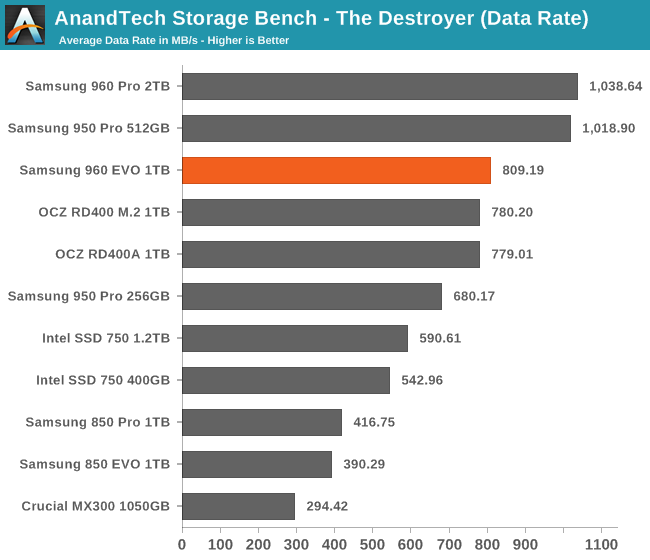
The 960 EVO is substantially slower than both the 950 Pro and 960 Pro, but the 960 EVO is faster than the flagship SSDs from Toshiba and Intel.
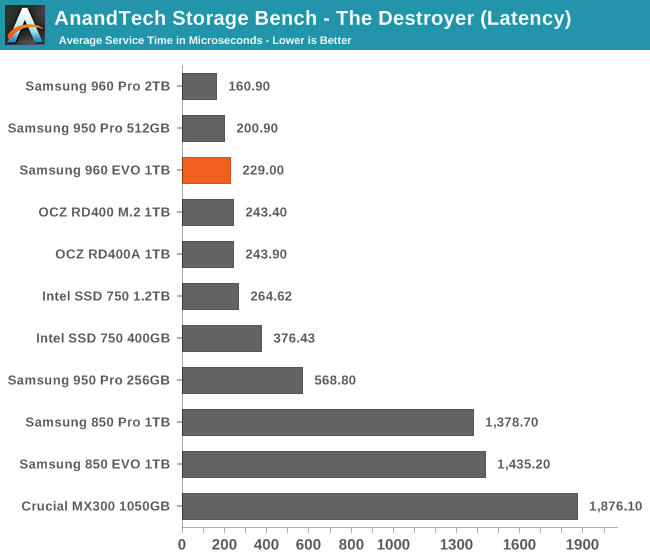
The 960 EVO delivers average service times on par with other high-end PCIe SSDs, and is still slightly faster than any non-Samsung drive.
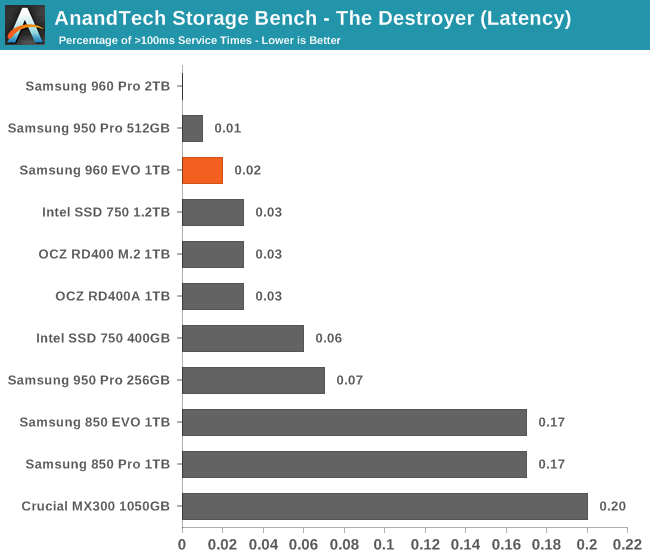
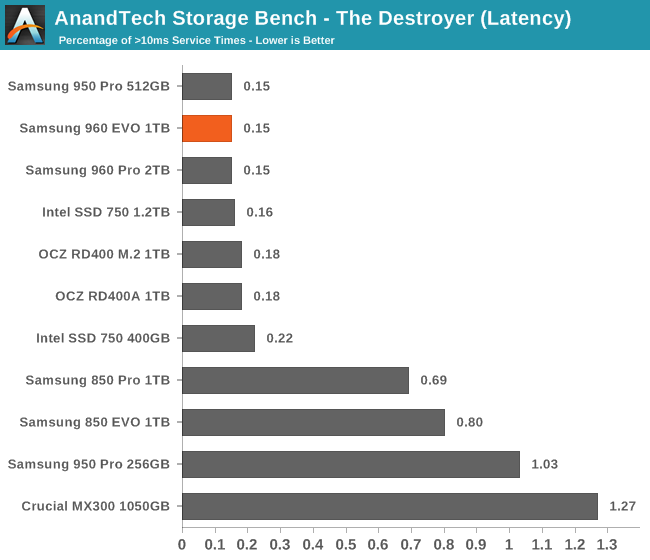
In the frequency of high-latency outliers, the 960 EVO is surpassed only by Samsung's 950 Pro and 960 Pro.
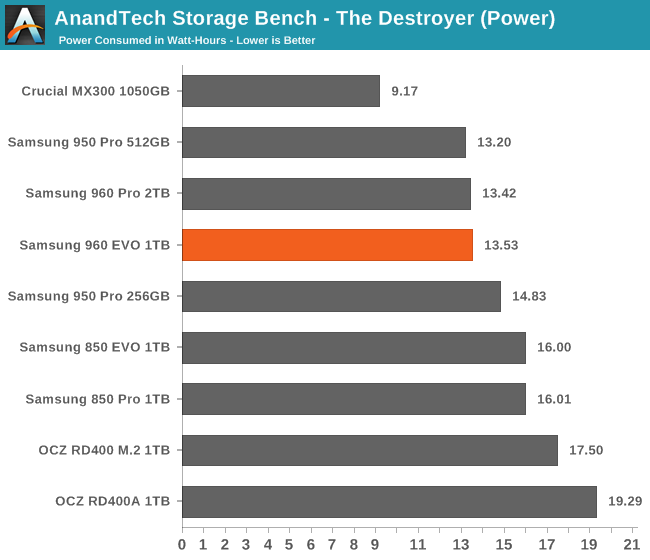
Despite using TLC NAND, the 960 EVO manages comparable power efficiency to the 960 Pro, putting it ahead of the fastest SATA drives but still drawing substantially more power than the most efficient SATA SSDs.










87 Comments
View All Comments
TheinsanegamerN - Tuesday, November 15, 2016 - link
Is there currently any consumer software that can change these settings?Billy Tallis - Tuesday, November 15, 2016 - link
I use nvme-cli on Linux to manually test these settings, and there's a patch working its way toward a stable kernel release that will let supporting drives automatically make use of their various idle states. I'm not aware of any Windows tools that give the same degree of fine-grained control, but Intel's tools for enterprise SSDs and the 750 have some power management options.TheinsanegamerN - Tuesday, November 15, 2016 - link
That would be nice. I'd love to be able to set my 950 pro to a max of, say 2 watt on battery, or set the maximum speed to sata III speed (on battery), if it meant better battery life, and enable full speed when on mains power.philehidiot - Tuesday, November 15, 2016 - link
Yeh I noted the thermal limits kicking in and I did wonder if there's any major benefit from hacking these things, putting on some thermal goop, a big heat sink and a fan. Obviously it'll probably not help in the majority of cases but the mentalist part of me was pondering just how much performance there is to be unlocked.TheinsanegamerN - Tuesday, November 15, 2016 - link
The fan would be a bit of overkill, but the 950 pro showed some gains with a passive heatsink installed. The 960 would probably benefit even more.philehidiot - Tuesday, November 22, 2016 - link
Time to break out the liquid nitrogen. If anyone at work asks where it has all gone I'll just say I was remove the mother of all warts from a patient.philehidiot - Tuesday, November 22, 2016 - link
*removing. Bloody spelling.nagi603 - Tuesday, November 15, 2016 - link
A shame they dropped the write endurance to half of the 950!TheinsanegamerN - Tuesday, November 15, 2016 - link
TLC vs MLCbull2760 - Tuesday, November 15, 2016 - link
Why do you not show consistent results. In some tests you include the Intel 750 and on other you exclude it in the graph. You excluded the Intel 750 in the power consumption both times. Are you not able to calculate the power being used when the Intel drive is being used?